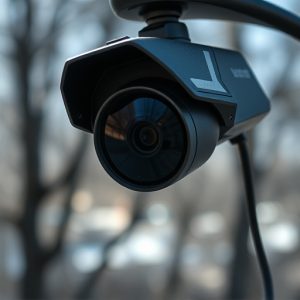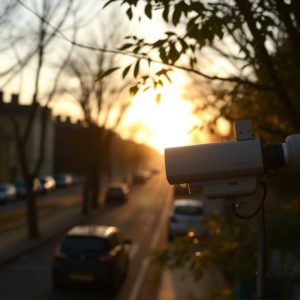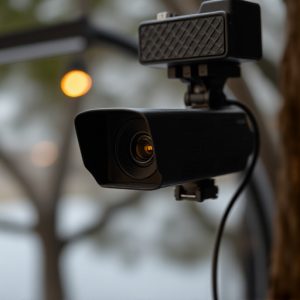Detecting Hidden Cameras: Reflecting Light to Uncover Front Door Spies
Light reflection analysis is an effective method to detect concealed cameras hidden behind front doo…….
Light reflection analysis is an effective method to detect concealed cameras hidden behind front doors, as irregular surfaces and objects with unique textures absorb and reflect light at odd angles. Illuminating a door directly can expose these cameras through unusual reflections. This technique empowers homeowners and security professionals to safeguard privacy by identifying spy cameras non-invasively using advanced sensors and visual inspections in low light conditions. Integrating such detection methods strengthens front door security in residential settings.
Uncover the subtle art of detecting hidden threats with our guide to spy camera detection using light reflection techniques. In an era where privacy is paramount, understanding how front door concealed cameras operate is crucial. This article delves into the science behind these devices, exploring the practical applications and countermeasures needed to safeguard your home. Learn how to navigate this modern-day enigma by recognizing subtle light reflections, ensuring your peace of mind in today’s digital landscape.
- Understanding Light Reflection and Spy Camera Detection
- The Science Behind Front Door Spy Cameras
- Practical Applications and Countermeasures for Concealed Cameras on Front Doors
Understanding Light Reflection and Spy Camera Detection
Light reflection plays a pivotal role in spy camera detection, especially when it comes to identifying concealed cameras like those hidden behind front doors. The technique leverages the fact that light reflects off surfaces differently depending on what it encounters. When a beam of light hits a smooth surface, such as glass or metal, it bounces back uniformly, making it easy to detect. However, if the light hits an irregular surface or an object with uneven textures, like a hidden camera’s lens, part of the light is absorbed while some reflects back at odd angles, creating subtle variations in the reflected light that can be detected by trained eyes or advanced sensors.
By analyzing these reflections, particularly when using specific illumination techniques, individuals can uncover hidden cameras. For example, shining a bright light directly onto a front door may cause a concealed camera’s lens to reflect light in an unusual pattern, revealing its presence. This method is especially useful for homeowners wanting to ensure their privacy by identifying potential Concealed Cameras for Front Door before granting access.
The Science Behind Front Door Spy Cameras
Front door spy cameras, also known as concealed cameras, are a modern security solution designed to protect homes and businesses from potential threats. The science behind these devices revolves around light reflection technology. When a camera captures an image or video, it does so by detecting and interpreting light reflected off surfaces. In the case of front door spy cameras, the device is strategically placed to capture footage of anyone approaching or entering the property.
These cameras utilize advanced sensors that are highly sensitive to changes in light intensity. They can detect even the slightest variations in reflection, allowing them to distinguish between a person and other objects. By analyzing the reflected light, the camera can determine the direction and distance of movement, making it an effective tool for monitoring front doors. This technology ensures that potential intruders or delivery personnel are visible, providing homeowners and business owners with valuable security insights.
Practical Applications and Countermeasures for Concealed Cameras on Front Doors
The detection of concealed cameras on front doors has become a significant concern for homeowners and security professionals alike, given the increasing prevalence of advanced surveillance technology. Practical applications of light reflection techniques can help identify these hidden devices non-invasively. By analyzing subtle changes in light patterns, such as irregular reflections or unusual shadows, it is possible to uncover spy cameras strategically placed on or around front doors. This method has proven valuable for security audits and ensuring privacy in residential settings.
To countermeasure against concealed cameras, homeowners can take proactive steps. One effective approach involves utilizing specialized tools that detect infrared or UV light, which many hidden cameras are sensitive to. Additionally, regular visual inspections, especially during low-light conditions, can help identify unusual mounting points or suspicious hardware. By combining advanced detection methods with thorough examinations, individuals can better protect their front doors from covert surveillance and maintain a higher level of privacy in their homes.
The detection of concealed cameras, particularly those hidden on front doors, has become a critical concern in modern times. By understanding light reflection and employing advanced techniques like the science behind front door spy camera identification, homeowners can stay vigilant against potential privacy breaches. Practical applications and countermeasures discussed in this article offer valuable insights into navigating this evolving landscape. Armed with knowledge about concealed cameras for front doors, folks can now take proactive steps to protect their homes and personal spaces effectively.


